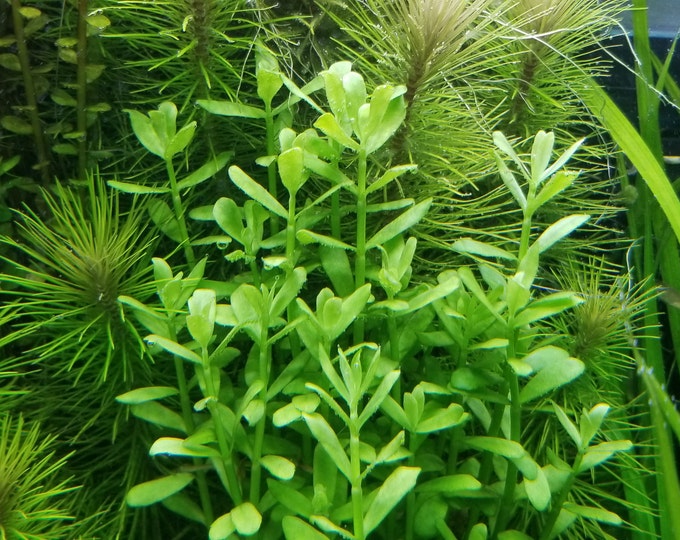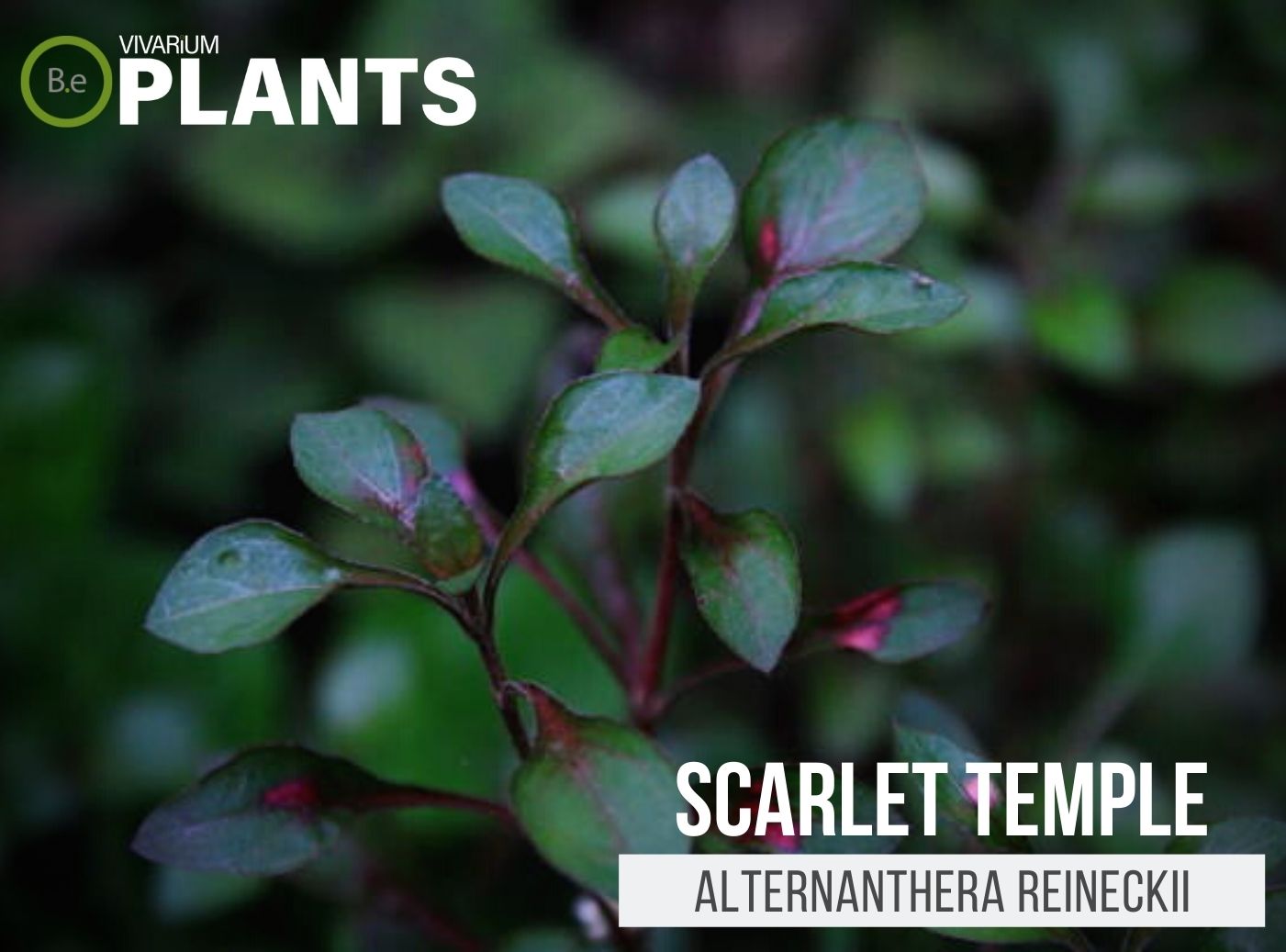Hedyotis salzmannii (Oldenlandia salzmannii) is a lovely vivarium stem plant to have in an enclosure with or without animals.
It’s an easy–to–care–for herbaceous evergreen that you can use for carpeting or even as an edging ground cover around the base of hardscapes.
Hedyotis salzmannii is safe for pets and recommended for beginner to intermediate–level plant keepers.
It makes a great plant because of its ability to spread and provide ground cover quite quickly.
| Quick Stats: | |
|---|---|
| Scientific Name | Hedyotis salzmannii, Oldenlandia salzmannii |
| Common Name | Diamond Flower |
| Family Name | Rubiaceae |
| Habitat | Woodlands and grasslands |
| Temperature | 65°F to 85°F |
| Height | .5 to 2 inches |
| pH | 5.5 to 7.5 |
| Lighting | Moderate, Indirect |
What is a Hedyotis salzmannii?
Hedyotis salzmannii, previously known as Oldenlandia salzmannii, is a creeping plant with a profusion of waxy leaves and tiny white, yellow, or pink flowers.
It grows quickly and can spread as high as 2”. Its leaf color can vary from dark green to a dark reddish–brown depending on its light and soil conditions.


Hedyotis salzmannii Facts
Hedyotis salzmannii is native to grasslands and woodlands, mostly covering the floor of jungles.
The flowers are very tiny and often go unnoticed, yet the presence of both flowers and leaves of this plant, when grouped together, has a hypnotizing effect.
Description
The growth pattern of this ground cover plant is quite dense and small in size. It has hairy leaves that are opposite and nearly round.
The upper part of the leaf is a deep dark green and the underside is lighter in color. Its flowers are very small and insignificant compared to the rest of the plant.
Habitat
Hedyotis salzmannii is native to tropical and humid climates but can also be found in temperate areas around the world.
It tolerates shaded and partially sunny areas but prefers plenty of both and is quite tolerant of a range of temperatures (65°F to 85°F).
pH Preference
Hedyotis salzmannii can tolerate a wide range of pH levels (5.5 to 7.5). It prefers a more acidic soil, which is common in mountain forests and grasslands, so you may want to keep a check on the pH level of your soil and make adjustments as necessary.
Vivarium Type
Oldenlandia salzmannii is quite an easy-going species. With that in mind, it will not be too complicated when choosing the type of enclosure it is grown in. It is best to try and replicate the plant’s natural habitat as much as possible.
Doing so will make it easier to provide this foliage plant with its basic needs. The proper setup and theme of the enclosure will make a big difference to the overall look and health of the plant. Be sure to choose setups that are moist and high in humidity.
Here are recommended vivariums it will do well in:
-
- Paludariums – Half aquatic/ half terrain-based enclosure.
- Ripariums – Mostly aquatic-based enclosures with some terrain features present.
- Aquariums – Fully aquatic-based enclosure with little to no dry terrain.
Vivarium Placement
Hedyotis salzmannii is best placed in the foreground. The soil should be firmly packed, slightly moist, and well–drained.
When using this plant as carpeting, you should spread a thick layer throughout the bottom of the vivarium, allowing the plant to spread out and cover the area as much as possible.
Substrate
This plant prefers soil that is rich in organic matter and slightly acidic.
Coco coir, sphagnum moss, and forest soil mix with a high sand content or peat moss–based mixes are all great options to use when setting up a vivarium with this plant.
Make sure to pack the soil firmly and water it evenly to ensure that the top layer of the soil remains slightly moist.
Lighting
It’s important to provide your Hedyotis salzmannii with adequate aquarium lighting, as this is a light–loving plant.
It does best with higher levels of brightness and plenty of indirect sunlight. You may want to consider adding artificial lighting for your vivarium, such as LEDs that mimic cloudy days in the wild.
Buy Hedyotis salzmannii
When buying Hedyotis salzmannii, there are a few things to keep in mind. Making sure the plant is healthy when purchased is essential for its success in a vivarium or pond. Vegetation that is already in poor conditions will have a very hard time adjusting to new environments.
Click the image below to learn more about the current price and other relative info about this plant.s
Hedyotis salzmannii Care & Propagation
Hedyotis salzmannii is a very easy plant to care for, as it grows quite rapidly and spreads through the soil.
It propagates easily and expanding existing colonies is a great way to control the size of your plant.
How to Grow
Hedyotis salzmannii is propagated by uprooting the plant and planting its roots in another location. Make sure that the soil is firmly packed and slightly moist.
Also, be careful not to damage the roots while uprooting the plant.
Water Requirements
When growing Hedyotis salzmannii completely submerged, keep the water moving and the tank topped off for optimal conditions.
If using a misting system for emersed growing, make sure to monitor the frequency of your mist. The moss should only be misted once it has dried out, and soil should be kept wet or damp.
Plants Similar to Hedyotis salzmannii
Adding diversity to an enclosure is key to an aesthetically pleasing setup. Try mixing up the look of your vivarium with different flora that can easily co-exist in the same types of environment.
Furthermore, if for some reason you find Oldenlandia salzmannii hard to acquire or would like to consider something similar to this aquarium plant… Here are other stem plants you might find will do well with or in place of Hedyotis salzmannii:
Conclusion
Overall, Hedyotis salzmannii is a great ground cover or carpeting plant for tanks. It is quite easy to care for, spread quickly, and tolerates a wide range of environmental conditions.
Its leaves can vary in color, depending on the vibrance of the lights and moisture of the soil, so it can add a unique look to your vivarium. Once properly established, it’s an excellent plant that any level plant keeper can appreciate!




